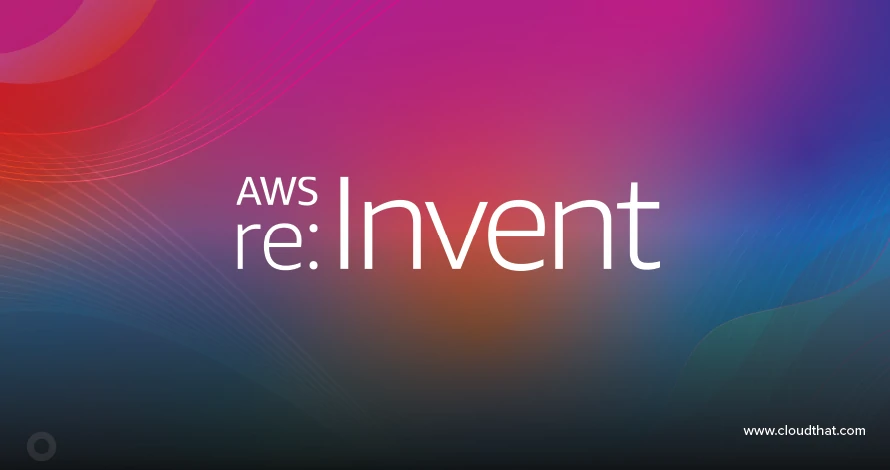|
Voiced by Amazon Polly |
Introduction
In today’s rapidly evolving digital landscape, traditional security models are no longer enough. With businesses migrating workloads to the cloud and employees accessing systems remotely, the boundaries of corporate networks have dissolved. This shift has opened the door to new cybersecurity challenges, from insider threats to sophisticated ransomware attacks.
To tackle this, organizations are increasingly adopting Zero Trust Architecture (ZTA), a modern security approach that assumes “never trust, always verify.”
Pioneers in Cloud Consulting & Migration Services
- Reduced infrastructural costs
- Accelerated application deployment
Zero Trust Architecture
Unlike traditional perimeter-based security, where once a user gained access to the network, they were implicitly trusted, Zero Trust continuously validates identity, device health, and context before granting or maintaining access.
In essence, Zero Trust = Continuous Verification + Least Privilege + Micro-Segmentation.
Core Principles of Zero Trust
- Verify Explicitly: Authenticate and authorize every access request using all available data points (identity, location, device, workload, etc.).
- Use Least Privilege Access: Limit user permissions to only what’s necessary for their role or task.
- Assume Breach: Operate with the mindset that your systems may already be compromised, and design controls accordingly.
This model drastically reduces the risk of lateral movement by attackers and minimizes potential damage in case of a breach.
Why Zero Trust is Needed in Today’s Technological World?
The modern IT environment is dynamic, hybrid workforces, cloud-native applications, and IoT devices have expanded the attack surface. Traditional castle-and-moat security models cannot protect assets spread across multiple networks and platforms.
Let’s look at the key reasons why Zero Trust has become a necessity:
- Rise in Cloud Adoption
With organizations moving workloads to AWS, Azure, and other cloud platforms, security perimeters have become fluid. Users, applications, and data are no longer confined within one network boundary.
Zero Trust ensures identity-based, context-aware access to resources regardless of location, making it ideal for cloud environments.
- Increase in Cyber Threats
Cyberattacks are becoming more sophisticated. Phishing, ransomware, and credential theft are common. Once attackers gain network access, they often exploit implicit trust to move laterally.
Zero Trust stops this by segmenting access and enforcing verification at every layer, preventing unauthorized movements.
- Remote and Hybrid Work
The global shift to remote work has further blurred network boundaries. Employees connect from multiple devices and networks, creating potential vulnerabilities.
Zero Trust ensures that every login, device, and session is verified, no matter where it originates.
- Compliance and Data Protection
Regulations such as GDPR, HIPAA, and ISO 27001 emphasize data protection and access control. Implementing Zero Trust helps meet these compliance standards by enforcing strict identity verification and access logging.
Zero Trust in the Cloud
Implementing Zero Trust in cloud environments like AWS involves a combination of identity management, continuous monitoring, encryption, and policy enforcement.
Unlike on-premise systems, where security focuses on physical boundaries, cloud Zero Trust centers around identities, workloads, and data flows.
Key aspects include:
- Identity-Centric Security: Managing who has access and under what conditions.
- Network Segmentation: Dividing workloads and VPCs to minimize breach impact.
- Continuous Monitoring: Using analytics and logging to detect anomalies.
- Encryption Everywhere: Protecting data in transit and at rest.
Zero Trust Implementation in AWS
AWS provides a strong foundation for building Zero Trust Architectures. It offers a range of security, identity, and network services that align with the Zero Trust model.
- Identity and Access Management (IAM)
At the core of Zero Trust is identity verification.
AWS IAM allows fine-grained control over who can access specific AWS resources. You can:
- Enforce least privilege access using IAM policies and roles.
- Use AWS IAM Identity Center (formerly AWS SSO) for centralized user management.
- Implement MFA (Multi-Factor Authentication) for enhanced identity protection.
- Amazon Cognito for Application Identity
For applications that require user authentication, Amazon Cognito provides user sign-up, sign-in, and access control with integration to identity providers like Google, Microsoft, and Okta.
This ensures continuous and secure user verification for applications.
- Network Segmentation using VPC
Using Amazon VPC (Virtual Private Cloud), organizations can isolate workloads into separate subnets and control communication between them using security groups and network ACLs.
This achieves micro-segmentation, a key pillar of Zero Trust, by limiting internal lateral movement.
- Encryption and Data Protection
AWS services like AWS KMS (Key Management Service) and Secrets Manager help encrypt data and securely manage credentials.
All data, at rest (in Amazon S3, Amazon RDS, etc.) and in transit, can be encrypted using AWS-native tools.
- Continuous Monitoring & Detection
To maintain a Zero Trust posture, continuous visibility is essential. AWS provides:
- Amazon GuardDuty: Detects threats and suspicious activities.
- AWS CloudTrail: Tracks user activities and API calls for auditing.
- AWS Security Hub: Centralizes alerts from multiple services for quick response.
These tools collectively support the “assume breach” principle, ensuring rapid detection and response.
- Device and Workload Trust
With AWS Systems Manager and AWS Inspector, you can continuously assess system health, patch compliance, and vulnerabilities, verifying that every device and workload remains secure before granting access.
Benefits of Implementing Zero Trust on AWS
- Enhanced Security Posture: Protects against insider threats, compromised credentials, and lateral attacks.
- Granular Access Control: Enables least privilege policies and continuous verification.
- Scalability and Flexibility: Easily adaptable across hybrid and multi-cloud environments.
- Improved Compliance: Supports adherence to global data protection regulations.
- Operational Visibility: Continuous monitoring and analytics provide deep insights into network behaviour.
Challenges in Adopting Zero Trust
While the benefits are substantial, implementing Zero Trust requires a cultural and technical shift.
- It demands identity centralization and integration across multiple systems.
- Legacy applications may not support granular access controls.
- Continuous verification introduces operational overhead if not automated.
However, AWS helps overcome many of these challenges through managed services and automation tools, making Zero Trust adoption more practical and efficient.
Conclusion
As cloud environments grow more complex and threats more advanced, the Zero Trust Architecture has become a necessity rather than an option.
By enforcing continuous verification, least privilege access, and micro-segmentation, Zero Trust ensures that even if attackers breach one layer, they can’t move further.
With AWS offering native tools to implement and scale Zero Trust, organizations can secure their infrastructure, applications, and data, while maintaining agility and compliance.
In a world where trust is a vulnerability, Zero Trust is the future of cloud security.
Drop a query if you have any questions regarding Zero Trust Architecture and we will get back to you quickly.
Empowering organizations to become ‘data driven’ enterprises with our Cloud experts.
- Reduced infrastructure costs
- Timely data-driven decisions
About CloudThat
CloudThat is an award-winning company and the first in India to offer cloud training and consulting services worldwide. As a Microsoft Solutions Partner, AWS Advanced Tier Training Partner, and Google Cloud Platform Partner, CloudThat has empowered over 850,000 professionals through 600+ cloud certifications winning global recognition for its training excellence including 20 MCT Trainers in Microsoft’s Global Top 100 and an impressive 12 awards in the last 8 years. CloudThat specializes in Cloud Migration, Data Platforms, DevOps, IoT, and cutting-edge technologies like Gen AI & AI/ML. It has delivered over 500 consulting projects for 250+ organizations in 30+ countries as it continues to empower professionals and enterprises to thrive in the digital-first world.
FAQs
1. What is the main goal of Zero Trust Architecture?
ANS: – The primary goal of Zero Trust Architecture is to eliminate implicit trust within a network. It continuously verifies every user, device, and application before granting access, ensuring that only authorized entities can access sensitive data and resources.
2. How is Zero Trust different from traditional network security?
ANS: – Traditional security models rely on perimeter defence, once inside the network, users are trusted. Zero Trust, on the other hand, assumes that no one is automatically trustworthy, even if they’re inside the network, and requires ongoing authentication and authorization.
3. Why is Zero Trust important in cloud environments like AWS?
ANS: – In cloud environments, resources are distributed and accessed globally. Zero Trust ensures that access is identity-driven and context-aware, protecting data across hybrid and multi-cloud systems. AWS provides tools like AWS IAM, Amazon GuardDuty, and Amazon VPC to enable this model effectively.

WRITTEN BY Sidharth Karichery
Sidharth is a Research Associate at CloudThat, working in the Data and AIoT team. He is passionate about Cloud Technology and AI/ML, with hands-on experience in related technologies and a track record of contributing to multiple projects leveraging these domains. Dedicated to continuous learning and innovation, Sidharth applies his skills to build impactful, technology-driven solutions. An ardent football fan, he spends much of his free time either watching or playing the sport.


 Login
Login


 October 22, 2025
October 22, 2025 PREV
PREV










Comments